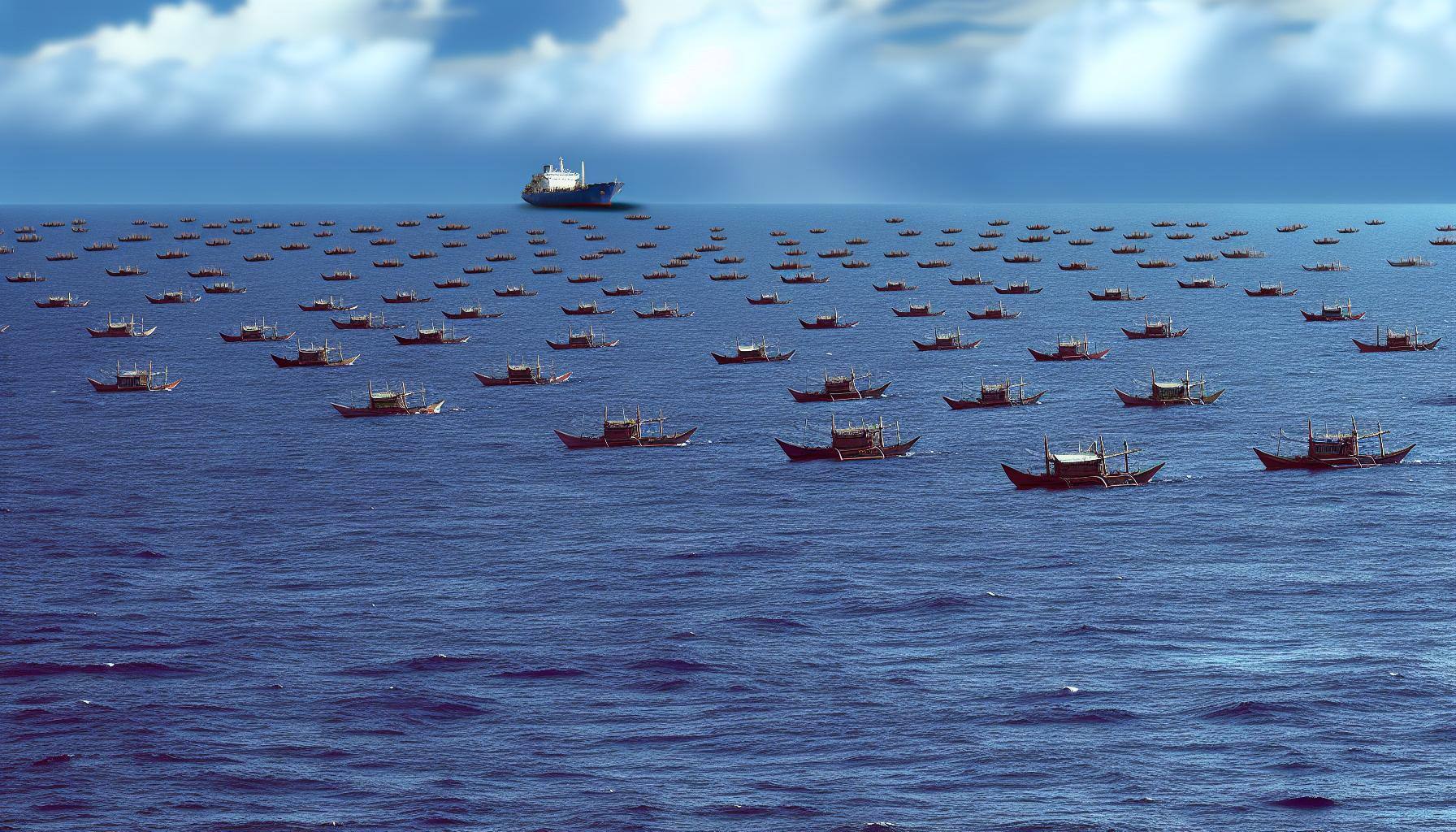China’s maritime militia, known as the People’s Armed Forces Maritime Militia (PAFMM), is a pivotal yet often overlooked component of Beijing’s strategy to assert its territorial claims in the South China Sea.
The militia's activities have intensified, exemplified by the swarming of Scarborough Shoal by Chinese fishing boats in May 2024. These boats, part of the maritime militia, were deployed not for fishing but to counter a Philippine aid mission, effectively deterring the operation and reinforcing China's control over the disputed territory.
Evolution and Structure of the Maritime Militia
The PAFMM originated from a post-civil war need to defend China’s coastline, evolving from a group of untrained fishermen to a sophisticated force capable of conducting "gray zone" operations—actions aimed at asserting control over contested waters without triggering direct military conflict. The militia plays a key role in geopolitical standoffs, including the capture of the Paracel Islands in 1974, the 2009 USNS Impeccable incident, and the 2012 Scarborough Shoal clash.
Composition and Capabilities
The PAFMM is a civilian-military hybrid force, divided into a professional fleet of at least 100 purpose-built boats and the larger Spratly Backbone Fishing Vessels (SBFV). The professional fleet is equipped with military-grade technology and is often visible on satellite tracking platforms in disputed areas. In contrast, the SBFV fleet, comprising regular fishing boats recruited through government subsidies, is less detectable due to low-grade or absent satellite transmitters.
Crews consist of civilian fishers, sailors, and ex-military personnel trained by the People’s Liberation Army Navy (PLAN) and the China Coast Guard (CCG). While the militia operates independently from these entities, it is closely coordinated and supported, primarily through government subsidies and salaries from state-owned companies.
Operational Tactics
The PAFMM operates across the South China Sea, the Yellow Sea, and within the exclusive economic zones of neighboring countries such as Indonesia, Vietnam, and Malaysia. Its operations range from blockading reefs and islands to engaging in aggressive maneuvers against foreign vessels. While typically unarmed, militia vessels are known to ram and shoulder other ships, and some are equipped with navigation, communication equipment, small arms, naval mines, and anti-aircraft weapons.
International Reaction and Strategic Implications
The international community, including the United States and the Philippines, has repeatedly condemned China's actions in the South China Sea, particularly those involving the maritime militia. The U.S., a treaty ally of the Philippines, has accused the militia of violating international law to enforce China's unlawful maritime claims.
Despite condemnation, the PAFMM remains a crucial tool for Beijing, providing a means to establish a presence and exert control in contested waters without escalating to open conflict. This deniability and ability to create on-ground realities complicate diplomatic and military responses from other nations, as evidenced by incidents like the 2021 Whitsun Reef surge.
Strategic Importance to Beijing
The maritime militia is integral to China’s broader strategy in the South China Sea, helping to maintain and expand its territorial claims. The militia's actions create a legal and diplomatic gray zone, allowing China to advance its interests while avoiding direct military confrontation. This strategy has enabled Beijing to establish a permanent and militarized footprint in the region over the past two decades.
Conclusion
China’s maritime militia is a sophisticated force that plays a critical role in Beijing’s efforts to dominate the South China Sea. Its operations, supported by substantial government funding and strategic planning, continue despite international opposition. The militia's activities underscore the complex and evolving nature of maritime security challenges in the region, necessitating a nuanced and coordinated response from affected nations and the international community.

Source: First Post





